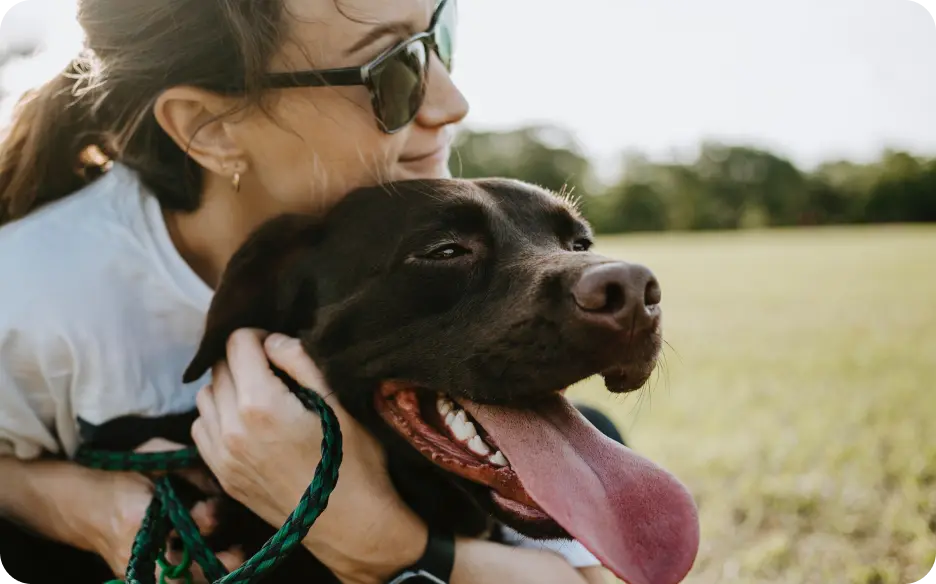When Do Dogs Start Humping?
Post Date:
December 10, 2024
(Date Last Modified: December 13, 2024)
When you bring a dog into your home, you may witness a range of surprising behaviors. One of the more curious actions is humping. If your puppy or adult dog engages in this behavior, you might wonder when it begins and what it signifies. This behavior can be perplexing for many dog owners, especially when it appears unexpectedly. Recognizing the reasons behind humping can help you respond effectively and create a healthier environment for your pet.
When Does Humping Begin?
Humping is a natural behavior for dogs, but it can emerge at different life stages. Puppies typically start to exhibit this behavior around six months of age. However, humping can occur at any age, influenced by various factors. For puppies, it often forms part of their play, a method of exploring their surroundings, or a way to assert themselves among littermates. As they mature, this behavior may persist, especially if it becomes associated with playtime or social interactions.
As dogs reach sexual maturity, usually between six to twelve months, humping may become more noticeable. Male dogs often display this behavior to express dominance or sexual interest. It’s a common misconception that only unneutered males hump; females and neutered males can also engage in this behavior. While hormones play a role, they are not the only factor. Social and environmental influences also contribute to humping.
Motivation Behind Humping
Understanding the motivations behind humping is crucial for effective management. Often, humping is a sign of excitement or overstimulation. Dogs may hump during play with other dogs or even while interacting with humans. This behavior can serve as an outlet for excess energy, particularly in younger dogs who have not yet learned appropriate ways to channel their enthusiasm.
In some cases, humping may indicate anxiety or stress. If a dog feels overwhelmed in social situations or is unsure how to interact with another pet, they might resort to humping as a coping mechanism. This behavior can escalate if not addressed. A calm environment, proper training, and gradual socialization can help alleviate anxiety-related humping.
Boredom can also lead to humping. Dogs need physical and mental stimulation to thrive. If they don’t receive enough exercise or are left alone for extended periods, they may resort to humping as a form of self-entertainment. Regular walks, playtime, and interaction with their owners can prevent boredom and the behaviors that often result from it.
Managing Excessive Humping
While humping can be a normal part of dog behavior, it may become problematic if excessive or inappropriate. If your dog is humping other dogs or people in a way that causes distress, intervention is necessary. Redirecting their attention to toys or engaging them in different activities can be effective. Positive reinforcement training, which rewards more appropriate behaviors, can also help modify their actions over time.
It’s essential to recognize that humping can serve as a form of communication. It may not always have a sexual connotation; for example, dogs may hump to greet another dog, express excitement, or assert dominance. Understanding this can help owners interpret their dog’s actions more accurately and respond appropriately to foster positive interactions.
For some owners, this behavior can be embarrassing, particularly in public settings. Addressing it early can prevent it from becoming a habit. Consistent training and socialization can teach dogs appropriate ways to engage with others. If humping persists despite efforts to redirect the behavior, consulting a professional trainer or behaviorist may prove beneficial. They can offer tailored strategies for effective management.
The Role of Neutering and Environment
Neutering or spaying can influence humping behavior, especially in male dogs. While not all dogs will stop humping after being neutered, the procedure can help reduce the drive associated with mating behaviors. However, it should not be the sole strategy employed to manage humping.
Maintaining a consistent environment is also crucial. Sudden changes in routine, the introduction of new pets, or other stressors can lead to increased humping. Providing a stable and familiar environment helps mitigate some anxiety or excitement that may prompt this behavior.
If excessive humping occurs, evaluating your dog’s overall health is important. Underlying medical issues can sometimes manifest as behavioral changes. If common behavioral triggers have been ruled out and humping persists, a visit to the veterinarian is warranted. They can assess your dog’s health and check for any underlying issues contributing to the behavior.
Nurturing Healthy Behavior
Recognizing when dogs start humping and understanding the reasons behind it empowers dog owners to navigate this behavior effectively. While humping can be a natural aspect of dog play and communication, ensuring it does not escalate into a problem is essential. Providing appropriate outlets for energy, training, and socialization fosters healthy behaviors that enhance a dog’s well-being.
Patience is vital when addressing humping. Dogs do not learn overnight, and consistent effort is necessary to modify behavior. Celebrate small victories while remembering that each dog is unique. What works for one may not work for another, so be prepared to adapt your approach based on your dog’s personality and needs.
As you work through humping behaviors, ensure your dog receives plenty of love and attention. Positive reinforcement fosters a trusting relationship. By understanding their needs and providing guidance, you can help them learn appropriate ways to interact with their environment and other dogs.






